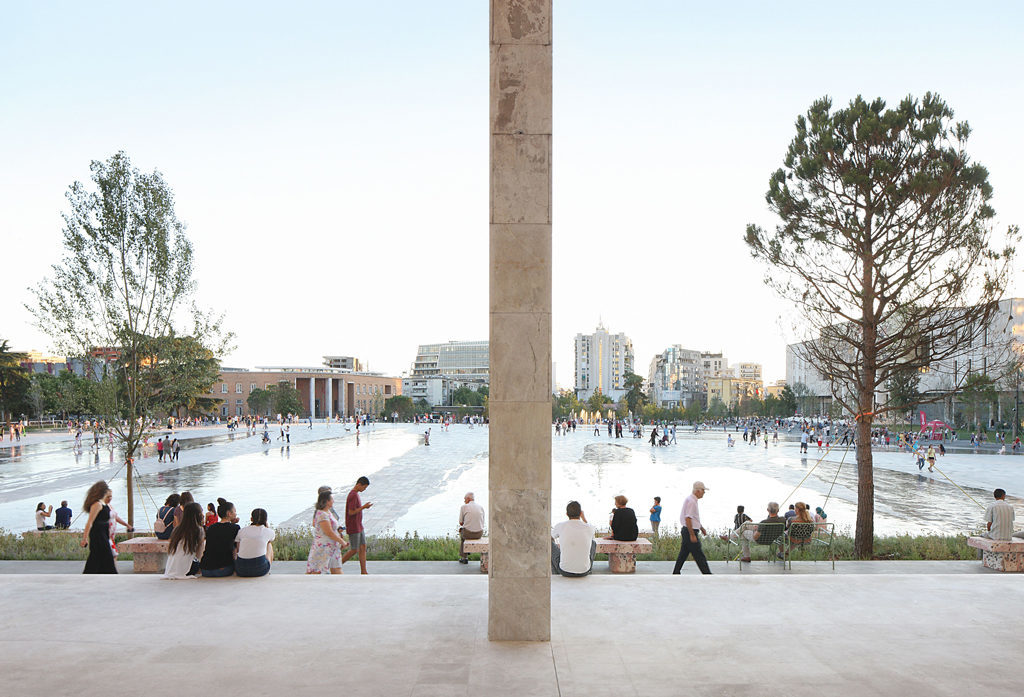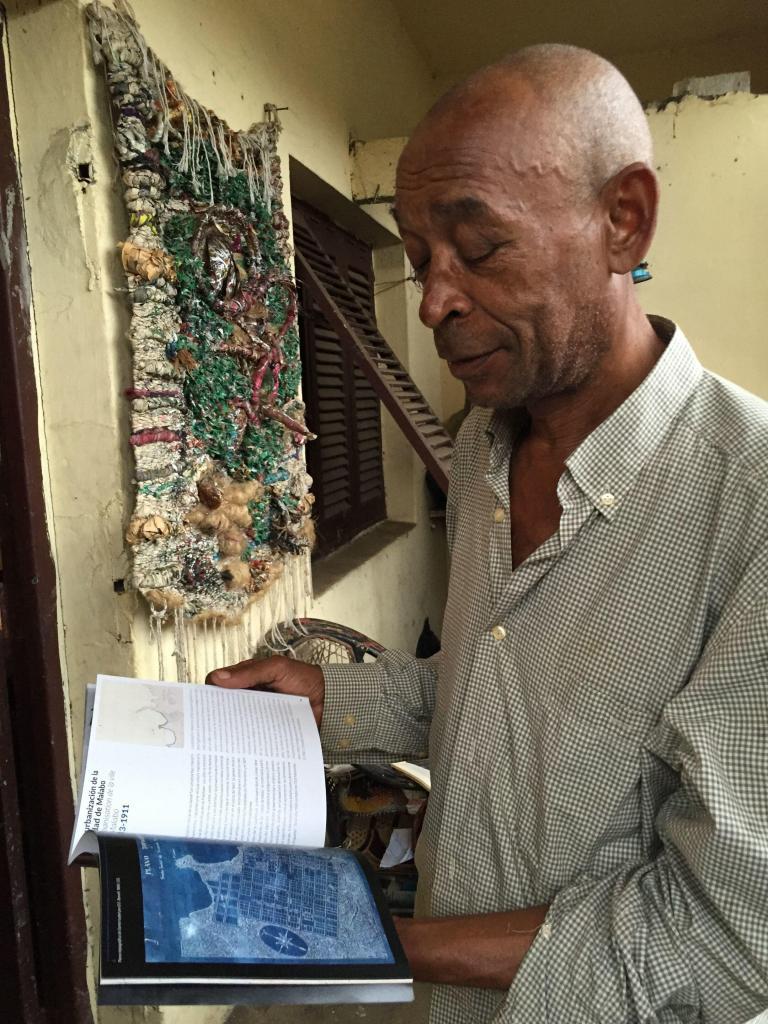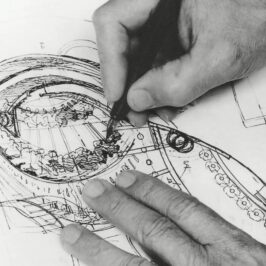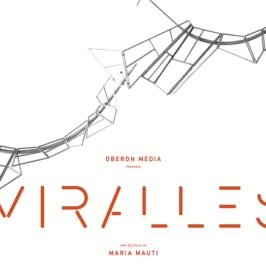The success of contemporary solutions in maintaining the original spirit of heritage, and ambition in order to reassert and disseminate its value, the common threads running through the winning entries.
The winners of the 4th edition of the European Award for Architectural Heritage Intervention AADIPA are among the reconversion of a landmark building in Barcelona (formerly home to a workers’ cooperative) for use by local residents; the renovation of a square that reflects the complex and diverse history of Albania; the urban renewal of a deprived neighbourhood in Porto; the recovery of a historical centre in Cantabria or an initiative that fosters built heritage as cultural capital both for the population of Equatorial Guinea and for tourism. The jury, which has highlighted the success of these contemporary solutions in maintaining the original spirit of heritage, has selected 12 finalists, four winning projects, one special mention and one special restoration award from a total of 239 works.
The European Award for Architectural Heritage Intervention AADIPA is a biennial award organised by the COAC (Association of Architects of Catalonia) and the AADIPA (Association of Architects for the Defence and Intervention in Architectural Heritage), sponsored by the Ministry of Culture of the Government of Catalonia and Barcelona City Council. This fourth award, with a record number of participants and from a wide variety of countries, is cementing its international reputation and renown.
The winners of the 4th European Award for Architectural Heritage Intervention AADIPA have been announced by the jury today at the COAC headquarters in Barcelona. The announcement of the 12 finalists, one special mention and five winning works was made during the 4th International Architectural Heritage Intervention Biennial AADIPA. The awards have been presented by the Right Honourable Maria Àngela Vilallonga Vives, Minister of Culture of the Government of Catalonia; Mr Marc-Aureli Santos, Director of Urban Architecture and Heritage of the Deputy Manager’s Office for Urban Planning of Barcelona City Council; Mr Gonçal Marqués Sagnier, Project Manager – Head of Operations of the Catalan Land Institute; Mr Antoni Vilanova, President of the AADIPA; and Ms Assumpció Puig, Dean of the Association of Architects of Catalonia.
Given the wide range of the submitted projects, the international jury of the award has wished to highlight not only the professionalism and architectural quality of the entries but also their capacity to demonstrate that a contemporary intervention can keep alive the original spirit and ambition of these elements in order to disseminate and boost architectural heritage.
In category A) Intervention in built heritage.

The jury has decided to give the Award to the Civic Centre Lleialtat Santsenca project by H Arquitectes.This decision is the result of attaching great value to the way in which the project maintains the original spirit of the building, a social place with memory, shown through the relationship between the spaces that house new uses framed within the history of the existing walls. A sensitive architecture built using low-budget solutions and committed to sustainability by means of powerful passive systems that structure the project. Furthermore, the jury has decided to give a special mention to the rehabilitation of dwellings in the deprived neighbourhood of Ilha da Bela Vista in Oporto, carried out by Cerejeira Fontes Architects and LAHB (Laboratory of Basic and Social Housing), due to its capacity to implement a programme and a sustainable project capable of transforming an urban area that needed an efficient and inclusive renewal.
In category B) Exterior Spaces.

The winning project is Skanderbeg Square in Tirana, by 51N4E, Anri Sala, iRI and Plant en Houtgoed, attaching special importance to the freedom exercised by the project authors in meeting the challenge of working on a site that is extremely complex and symbolic due to its key historical and political context. And due to the humbleness expressed through a subtle topography that reasserts to the same degree the value of the surrounding historical architectural complex and creates porosity with the setting, breaking with the composition of the established urban axis and generating a new model of urban space.
In Category C) Planning.
The jury has decided that the winning project is the special protection and rehabilitation plan of the Historical centre of Liérganes and its surroundings, by Carlos Riaño Lozano, Carlos Ferrán Alfaro, Fernando Navazo Rivero, Carlos Ferrán Aranaz and Luis Herrero Fernández. In the jury’s view, the intervention is highly valuable for the recovery of day-to-day life, combating the phenomenon of the progressive abandonment of historical centres. The jury also highlights that this is a plan of practical application whose level of detail shows the authors’ extensive knowledge of the vernacular architecture and scenic values of the place.
In Category D) Dissemination.

The winning work is Guinea Heritage 2020, by Montserrat Villaverde and Laida Memba Ikuga. This project integrates and structures strategies of research, knowledge and dissemination, considering built heritage as cultural capital for the population of Equatorial Guinea and for tourism. The jury underlines the fact that a project which began life as a piece of academic research has had the capacity to grow, involving not only national and international experts but also social, artistic, educational and governmental agents, having a positive impact on civil society, involving communities and contributing to the essential recovery of heritage. A participative, multidisciplinary, integrated and replicable model, which exemplifies the capacity to return to society from the Academy.
The 4th edition of The European Award for Architectural Heritage Intervention AADIPA, directed by Ramon Calonge, Oriol Cusidó, Marc Manzano and Jordi Portal; members of the Association of Architects for the Defence and Intervention in Architectural Heritage AADIPA, part of the COAC, with a record number of participants and from a wide variety of countries, confirms its reputation and its international notoriety.
More











Leave a Reply